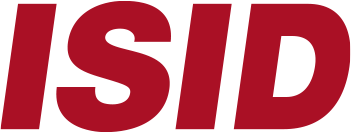Enterprise photo and video content management is a system used by businesses to centrally and securely manage and organise their media content. It enables businesses to efficiently store, access, and share video content; such as training videos, marketing materials, and company updates—throughout their organisation.
Benefits of a multimedia management software
There are a number of benefits to using an enterprise media content management system. One of the main benefits is the ability to easily access and share video content within the organisation. This can save time and improve efficiency by eliminating the need to find and share video files across multiple channels or devices.

Another benefit of enterprise video content management is its ability to support collaboration. By providing a centralised repository for video content, these systems allow teams to easily share and collaborate on video projects, even if they’re in different parts of the world.
In addition to improving access and collaboration, enterprise video content management systems can also help improve video content security and compliance. These systems often include features such as password protection, user permissions, and data encryption to help protect sensitive video content from unauthorised access or misuse.
Key sectors for multimedia management software
There are a number of industries where enterprise video content management can be applied. Here are five examples:
1. Education: Enterprise video content management can be used in the education sector to manage and distribute educational videos, lectures, and other learning materials to students and teachers. It allows a massive ingestion of video and audio with content identification and automatic archiving, as well as an advanced search to locate the didactic material required at any given time, as well as its extraction in multiple formats.
2. Healthcare: In the healthcare industry, enterprise video content management can be used to manage and share training videos, patient education materials, and telemedicine consultations. Videoma Archive in the health sector, allows the recording and management of operations of interest so that they are part of teaching material and dissemination or research. Videoma Archivo can be used to be integrated with the hospital television system to create channels with content recommended for patients.
3. Businesses: Businesses can use enterprise video content management to manage and share internal training videos, marketing materials, and compliance videos. Videoma for corporations provides you with all the tools to take advantage of existing and new multimedia material.
4. Government: Government agencies can use enterprise video content management to manage and share internal training videos, public service announcements, and other important information with employees and the public. Videoma for public administrations, allows immediate access to all video and audio material with the help of intelligent search and automatic tagging systems, based on AI, to reduce human intervention to a minimum in the video archiving process.
5. Legal: Law firms and law firms can use video recording in trials. Videoma para justicia allows the exhaustive recording of judicial sessions, processes or statements on video, from archive or live, for later archiving, transcription to editable text and analysis.
In conclusion, photo and video content management can be applied to various sectors where processes can be automated, streamlined and improved information storage to make proper use of it.
